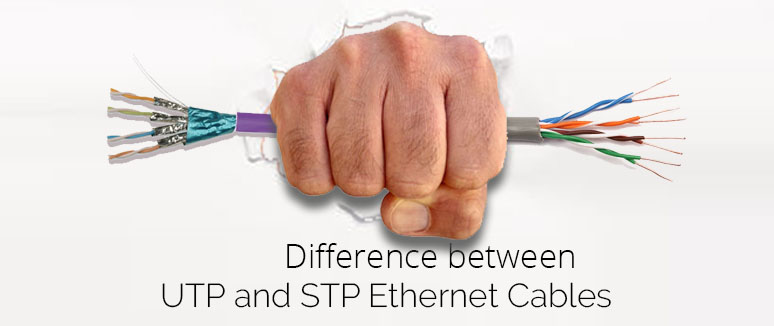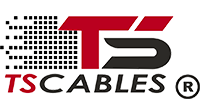Difference Between Shielded Vs Unshielded Cable

When it comes to networking, there are many types of network cables to consider when setting up a network or updating one. The Ethernet Bulk Plenum Copper Cables you select might affect network speed and signal quality.
Twisted pair cables are Ethernet network cables used in local area networks. They are the cables you’ll use to connect your computer to your modem or router for accessing the internet.
Depending on what you’re using, when using a device such as a computer, the network cable plugs into the network interface card; likewise, when using a router, switch, or modem, the other end connects to the network port. Twisted pair cables are now available in two different types. One of the considerations to be taken is whether to use shielded or unshielded twisted pair cables.
In this article, we’ll go through the differences between shielded and unshielded cable and which one is better for your application.
Note that: Twisted pair cables can be shielded or Unshielded.
Unshielded Twisted Pair Cable:
Unshielded twisted pair is made up of four pairs of small copper wires that have been twisted together and wrapped in color-coded plastic insulation. To prevent electromagnet interference or cross talk, the wires are twisted.
The majority of individuals use this type of network cable in their homes or businesses. Unshielded is economical, low-cost, and extensible. It is simple to install. It is used in Ethernet, token ring, and local area network (LAN) technology.
It suffers from external electromagnet interference. The massive fluorescent lighting installations or heavy machinery will blast straight through Unshielded Ethernet connections, and reducing data sped.
Structure of Unshielded Cable:
1. There are only a few layers of shielding on unshielded cables.
2. It has two layers: a plastic shield and a wire insulator, with no extra shielding on unshielded cable.
4. Unshielded is the most common and, in most cases, the ideal choice for short and medium-length network connections.
5. Unshielded cable is ideal for making patch cables.
Three Advantages of Unshielded Cable:
1. One of the main advantages of using an unshielded cable is that they do not need grounding.
2. It is easier to install because it does not block electrical lines. This reduces installation time and costs.
3. They are less expensive per meter than STP cables and other forms of LAN cabling. Also, Unshielded is less resistant to EMI and cross talk.
Three Disadvantages of Unshielded Cable:
1. It’s difficult to detect.
2. It is unable to transmit data securely.
3. The available bandwidth is restricted.
Shielded Twisted Pair Cable:
Shielded twisted pair is similar to unshielded twisted pair except that the wires are protected by a foil shield. This shielding also provides an extra layer of protection against electromagnet interference that can leak into and out of the cable.
This sort of cable is more commonly found in industrial settings than in homes or businesses. Radio and electrical frequency interference will likely affect it. Shielded twisted pairs are available in a variety of cable types. The most popular in use today are Cat5e Cable, Cat6 Cable, Cat6a Cable, and Cat7 Cable.
It should be kept away from electric motors, fluorescent lights, and other potentially dangerous devices. Horizontal cabling typically uses shielded cables.
Structure of Shielded Cable:
1. The shielded twisted pair’s outer layer is a plastic jacket or shield.
2. The second layer is braided shielding.
3. Aluminum foil shielding is a metallic material that shields the cable from magnetic interference or EMI beneath the braided wire.
4. It’s worth noting that some shielded cables contain foil shielding on all wires for overall protection, while others don’t.
Three Advantages of Shielded Cable:
1. When compared to unshielded twisted pair cable, shielded twisted pair cable provides superior protection from cross talk and other interference.
2. Shielded cable is used for both transmissions analog and digital.
3. When compared to unshielded cables, provide the best electrical characteristics.
Three Disadvantages of shielded Cable:
1. Shielded cable has the disadvantage of being expensive and requiring more installation work.
2. Despite its thicker and heavier design, there is no improvement in section length.
3. It’s less expensive than fiber optic cables, but more so than UTP.
Shielded VS Unshielded Cable:
-
- Shielded Ethernet cables are more expensive and difficult to install than unshielded Ethernet cables.
- Unshielded are cheaper, making it less flexible. as there is no exterior shielding to protect, it is smaller and more elastic than shielded cable. It is also less prone to damage.
- In the absence of EMI, Unshielded cable delivers faster transmissions. It’s less expensive to buy, easier to set up.
- The use of a grounding cable is not required in unshielded cable, but it is required in the shielded cable.
- Shielded is surrounded by a foil or mesh shield while Unshielded cable is a twisted pair cable with wires that are twisted together.
- Data Transmission Rate is slower in unshielded mode. Furthermore, the data transmission rate across the shielded cable is extremely high.
- There is a maintenance expense associated with the unshielded cable. Shielded cable, on the other hand, has a high maintenance cost.
- Shielded cable has far less noise than unshielded cable.
- The probability of cross talk is very high in Unshielded, whereas it is very low with Shielded cable.
- Shielded cable is a regular occurrence in data centers, industrial settings, workplaces, and other places where computer technology, electrical equipment, or electronic equipment is heavily used.
- Unshielded cable has a maximum length of around 100 meters. Although shielded cable has a maximum segment length of around 100 meters is supported.
CONCLUSION:
Whether you decide with unshielded or shielded cabling. Make sure you have high-quality cabling installed. The higher the quality of the wires, the longer the installation will serve you.
You won’t need shielded cable if you’re only connecting your home to the Internet, and you can get away with regular unshielded Ethernet cable.
As a result, shielded and unshielded cables can transmit at the same speeds, but shielded cables are noisier and EMI resistant. The maximum section length for both size and scalability is 100 meters. Shielded and unshielded differ in price, the shielded being more expensive overall.
UTP connector is BRJ45B and RJ-45 can be inserted in one way, Shielded use RJ-45 connector.
Keep in mind, Unshielded cables are available from category-1 to category-6.
What Do We Do?
Turnstone Cables, Inc. (“Turnstone”) is a leading manufacturer of high-performance cabling and connectivity products. Our goal is to give the best products and services possible. We’ve been a major provider and producer of low voltage cables including Cat5e Plenum, Cat6 Plenum, and Cat6a Plenum Pure Copper since 1989. All of our products are guaranteed to be of high quality. Please contact us by email or phone if you receive an unacceptable delivery.
For More Visit: https://tscables.com/
